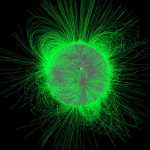Posts Tagged ‘Sun’
 LHS Episode #118: Making Flippy Floppy, Sol Style
LHS Episode #118: Making Flippy Floppy, Sol Style
 Hello, friends! Episode #118 of Linux in the Ham Shack is ready for your immediate consumption. Lots of ham radio and Linux related news in this episode, including discussion of Ham Radio Now, the sun's magnetosphere, digital contacts on 28MHz, Linux Mint, Linux news aggregation sites and more. Sit back in your easy chair, put on your headphones, and enjoy a sweet slice of podcast nirvana. Until next time...
Hello, friends! Episode #118 of Linux in the Ham Shack is ready for your immediate consumption. Lots of ham radio and Linux related news in this episode, including discussion of Ham Radio Now, the sun's magnetosphere, digital contacts on 28MHz, Linux Mint, Linux news aggregation sites and more. Sit back in your easy chair, put on your headphones, and enjoy a sweet slice of podcast nirvana. Until next time...
73 de The LHS Guys
 Solar Plasma Filament Eruption – The Sun – November 6,7 2013
Solar Plasma Filament Eruption – The Sun – November 6,7 2013
The Sun currently is active, with powerful, complex magnetic structures that have formed a healthy number of sunspots. We are seeing a fair number of x-ray flares, which push the 10.7-cm flux higher than we’ve seen in a while.
Sunspots and flares means better propagation in general, especially on the higher frequencies of the shortwave spectrum. While a flare can cause a short period of “blackout” conditions (especially on the lower frequencies) on the sunlit side of the Earth, such activity is part of the positive activity that ionizes the F-region, providing for DX.
Here’s a movie of one such flare and the release of solar plasma, a release known as a coronal mass ejection (CME): At about midnight, UTC, on 6 November 2013, a moderately-strong M-class flare erupted, with a “beautiful” CME: http://g.nw7us.us/18a0QvI
(Source: SOHO/SDO/NASA)
We will see continued flare activity over the weekend, so expect great conditions on the HF bands, with momentary blackouts. Keep up to the minute on space weather at http://SunSpotWatch.com
73 – de NW7US
Propagation Columnist, CQ Communications Magazine, Popular Communications Magazine
http://NW7US.us
 At 522,000,000 miles per watt, Voyager 1 might be the ultimate in QRP.
At 522,000,000 miles per watt, Voyager 1 might be the ultimate in QRP.
At 522,000,000 miles per watt, Voyager could be the ultimate in QRP … if you have the right antenna.
 Geomagnetic data reveal unusual nature of recent solar minimum
Geomagnetic data reveal unusual nature of recent solar minimum
An interesting article appeared on physorg.com yesterday regarding changes in the Earth’s magnetic field and its relation to solar activity. Although short on detail it hints at significant changes going on within our sun.
Since the mid-1800s, scientists have been systematically measuring changes in the Earth’s magnetic field and the occurrence of geomagnetic activity. Such long- term investigation has uncovered a number of cyclical changes, including a signal associated with 27-day solar rotation.
This is most clearly seen during the declining phase and minimum of each 11-year solar cycle, when the Sun’s magnetic dipole is sometimes tilted with respect to the Sun’s rotational axis. With the Sun’s rotation and the emission of solar wind along field lines from either end of the solar magnetic dipole, an outward propagating spiral-like pattern is formed in the solar wind and the interplanetary magnetic field that can drive 27-day, and occasionally 13.5-day, recurrent geomagnetic activity.
Recurrent geomagnetic activity can also be driven by isolated and semipersistent coronal holes, from which concentrated streams of solar wind can be emitted.
During the most recent solar minimum, which took place from 2006 to 2010, however, several researcher groups noticed 6.7-day and 9-day recurrent changes in geomagnetic activity, and similar patterns in the interplanetary magnetic field, and the solar wind. Using modern data covering the previous two solar minima, these higher-frequency occurrences were judged to be unusual.
Love et al. analyzed historical geomagnetic activity records from 1868 to 2011 and find that the 6.7-day and 9-day recurrent changes were actually unique in the past 140 years.They suggest that the higher-frequency changes in geomagnetic activity are due to an unusual transient asymmetry in the solar dynamo, the turbulent, rotating plasma deep within the sun which generates the magnetic field.
More information: Geomagnetic detection of the sectorial solar magnetic field and the historical peculiarity of minimum 23-24 Geophysical Research Letters, doi:10.1029/2011GL050702 , 2012
Provided by American Geophysical Union
“Geomagnetic data reveal unusual nature of recent solar minimum.”
March 19th, 2012. http://www.physorg.com/news/2012-03-geomagnetic-reveal-unusual-nature-solar.html
 Solar news
Solar news
Under the title “Earth braces for biggest space storm in five years” ABC Australia’s online news reports on the last 24 hours of solar activity.
A NOAA space scientist is quoted “Space weather has gotten very interesting over the past 24 hours”.
Further detail as usual from http://www.spaceweather.com and http://www.swpc.noaa.gov/today.html.
UPDATE: 24 hours later – “Space storm fizzle“!











